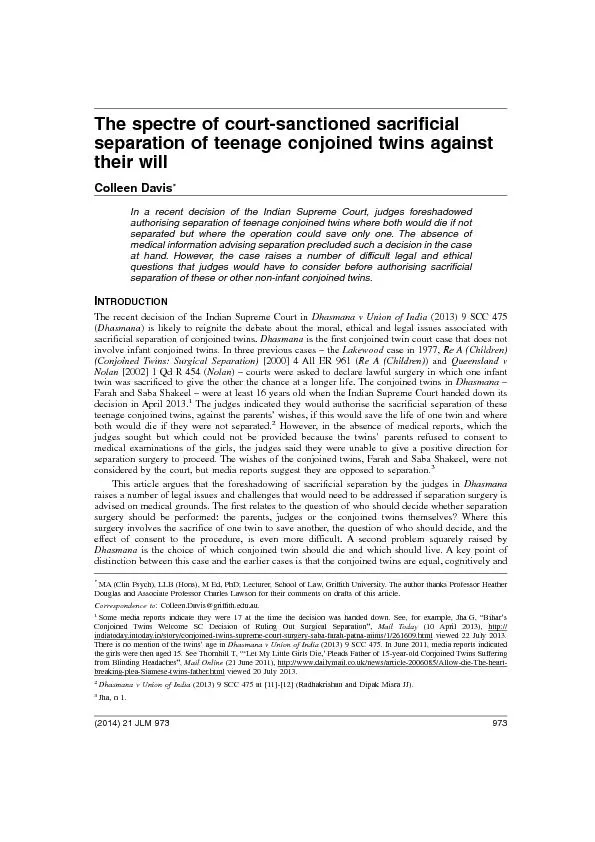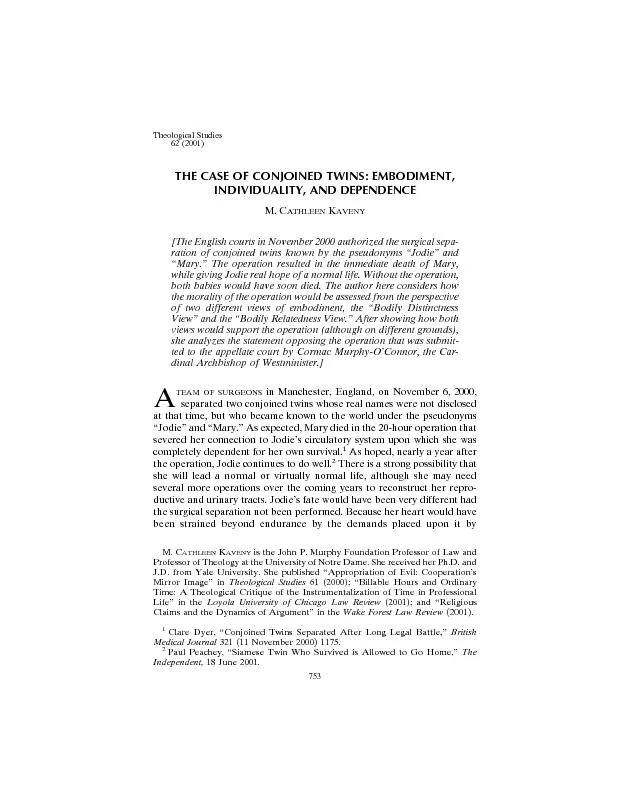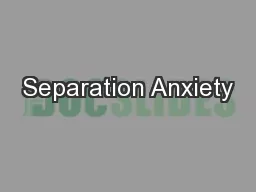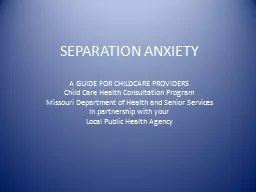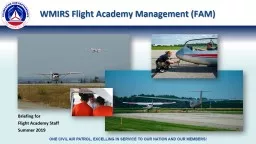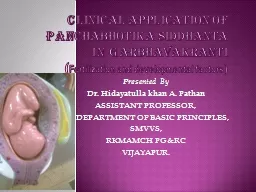PDF-IN RE A (CHILDREN) (CONJOINED TWINS: SURGICAL SEPARATION) [2001] Fam 1
Author : olivia-moreira | Published Date : 2016-11-05
COURT OF APPEAL WARD BROOKE AND ROBERT WALKER LJJ SEP 4 5 6 13 14 22 2000 147 ChildrenCourts inherent jurisdictionMedical treatmentConjoined twins Weaker twin J
Presentation Embed Code
Download Presentation
Download Presentation The PPT/PDF document "IN RE A (CHILDREN) (CONJOINED TWINS: SUR..." is the property of its rightful owner. Permission is granted to download and print the materials on this website for personal, non-commercial use only, and to display it on your personal computer provided you do not modify the materials and that you retain all copyright notices contained in the materials. By downloading content from our website, you accept the terms of this agreement.
IN RE A (CHILDREN) (CONJOINED TWINS: SURGICAL SEPARATION) [2001] Fam 1: Transcript
Download Rules Of Document
"IN RE A (CHILDREN) (CONJOINED TWINS: SURGICAL SEPARATION) [2001] Fam 1"The content belongs to its owner. You may download and print it for personal use, without modification, and keep all copyright notices. By downloading, you agree to these terms.
Related Documents

![PDF-IN RE A (CHILDREN) (CONJOINED TWINS: SURGICAL SEPARATION) [2001] Fam 1](https://thumbs.docslides.com/484864/in-re-a-children-conjoined-twins-surgical-separation-2.jpg)


